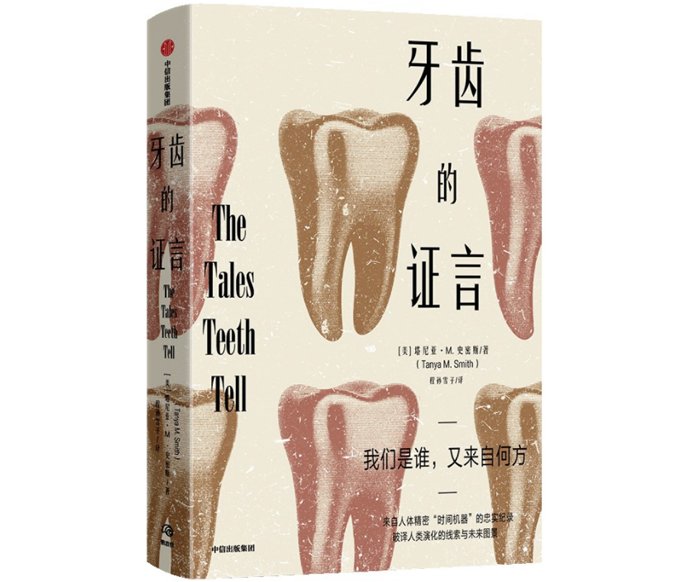Text|Le Yiping
The child who stole the chocolate accidentally showed a smile, and the parents couldn’t help laughing: the marks on the teeth reveal the secret! However, the teeth also hold many of our secrets. The book Testimony of Teeth by American anthropologist Tania M. Smith tells us that teeth know more secrets than we think.

The Testimony of Teeth [US] Tania M. Smith, translated by Cheng Sunxuezi, Nautilus|CITIC Publishing House
A child’s deciduous tooth looks crystal clear and lovely, and it is also a natural “birth certificate”! The author observed a deciduous tooth in slices, and under a 100x microscope, a clear line can be seen. The enamel on one side of the dark line is transparent and well-mineralized, while the other side has many changes. It turns out that this dark line is the birth line. Teeth begin to grow while the fetus is still in the mother’s womb, and at the moment of birth, it is difficult for both the baby and the mother. The physiological transition that lasts about a week after birth, especially changes in calcium levels, will form on the teeth. birth line. After that, enamel secretion in babies slows down and tight growth lines can be seen, the same for permanent teeth, and this process continues until we are 20 years old. In addition to the difficult moments of birth, illness, malnutrition, or stress can also create “weight lines” on the teeth that resemble birth lines. Teeth know the important moments that have been experienced!
In addition to the small personal history, the teeth also know the big history of mankind. At archaeological sites, bones and teeth are the easiest to preserve, allowing anthropologists to explore the origin and evolution of humans. Maybe we’re used to the tacit cooperation of our upper and lower teeth (it’s only rare to accidentally bite ourselves), but this came from two major innovations in early mammals. One is “the teeth of different shapes are closely interlocked and neatly arranged together”, and can chew food instead of piercing, cutting, and twisting; the other is changing teeth only once. Compared with those vertebrates that change teeth for life, our teeth are closely related to each other. The jaw connection is much tighter. Contrasting with our “closest relatives,” Darwin said, the sturdy canine teeth, which male primates excel at, became smaller in our ancestors, especially with weapons; by comparing the wear and tear of the third molars— —Assuming it is proportional to usage time — Homo sapiens and Neanderthals lived to old age far more than Australopithecus.
In addition, teeth record our behavior. Anthropologists have pointed out that the shape of the teeth reflects the type of food they prefer: under normal circumstances, those with flat teeth eat meat, those with sharp teeth eat leaves, those with low tips eat fruits and seeds. But the actual situation is much more complicated. The properties of the food itself are not easy to classify. For the same fruit, the teeth for biting peach and biting coconut are definitely different. In addition, the source and type of food will also change with many factors. The author’s team traced recipes from chemical elements in the teeth, such as barium, which can indicate when the owner of the tooth is weaned; carbon isotope content, which can tell whether the owner of the tooth is eating carbon-three or carbon-four plants. Modern people often use tooth cleaning to prevent periodontal disease. The washed calculus is the “new favorite” of anthropologists – because calculus is closely related to the food we eat, analyze the starch types in it, and compare the plant “fingerprint” phytolith body, we can know what our ancestors ate. The strontium isotopes in rocks and plants in different regions have their own characteristics, and comparing their content in dental calculus can determine the migration path of human beings. In addition to eating, some people like to do something with their teeth, which the book calls “auxiliary chewing behavior.” Commonly known as “guazi teeth” in life, it is the small pits worn in the front teeth of people who love melon seeds. Similarly, studying the traces of specific locations on teeth reveals the history of ancestors using teeth as pliers.
Today, people’s awareness of protecting their teeth is increasing. I am afraid that they do not want to leave the distinctive “violent” use marks, and they are willing to clean their teeth more carefully. However, it is not easy to have healthy teeth, which is also related to lifestyle: excessive intake of sugar can cause dental caries, processed foods deprive us, especially children, of the opportunity to chew, lack of necessary wear and tear can easily lead to irregular upper and lower bites. Narrow jaws are regarded as the cause of impacted wisdom teeth… Will human beings miss a beautiful smile in the future? When we read the secrets of the past from the teeth of our predecessors, please also try to be kind to our teeth, may it replace us It will be a good memory to record.